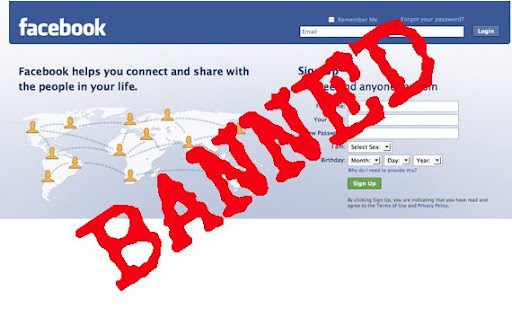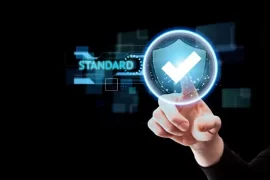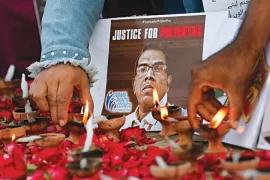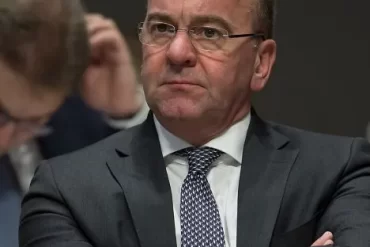Bangladesh, a leader in the developing world is currently showing magnificent strides in economic development and technological application. Considering the demography of Bangladesh youth represents roughly one third of the country. Bangladeshi youth ages between 10 to 24 years amounts 46.7 million in 2013, which is approximately 30% of the total population (PRB 2013). This vast majority of young generation is tech savvy. A huge intrusion of Internet in the country is also enhancing development. Report by Broadband Commission, a conjunction of International Telecommunication Union (ITU) and UNESCO titled ‘State of Broadband 2013’ shows Bangladesh stands at 161st position of 194 countries in Internet usage with 6.1 percent of the population having access to the web in 2012. The same report says in mobile broadband, Bangladesh’s position is 137th. With the rise of Internet users the adverse impacts of globalization is also leaving its imprints. Radicalisation through Internet is increasingly becoming more common. UK newspaper The Guardian dubbed Internet as the “biggest breeding ground for violent extremism (Travis 2012).” The Internet constitutes only one out of a wide range of factors with a potential influence on radical and violent behavior. Radicalisation is often triggered by religious misinterpretation, grievances, out of dire economic condition, acquaintance, or even multiculturalism. Norwegian far-right terrorist Anders Behring Breivik admitted that he committed the massacre in order to defend Norway from multiculturalism (Price 2012).
Extremist groups, their affiliates, and adherents are utilizing online tools and resources to spread messages of violence and division. These groups use Internet to disseminate information, spreading propaganda and sentiments, select and recruit potential followers, generate funding from patrons and monitor prospective threats from individuals or groups. These extremist groups are now adeptly exploiting the blessings of popular media to manipulate and propagate sentiments. Music videos, online games, selective news items all serve their purpose in misleading general public and attracting adherents. Internet and social media offer innumerable opportunities to connect, share and collaborate, at the same time it provide ways to the extremists to access new audiences and tools for radicalisation.
Radicalisation is a fluid, nonlinear, and highly individualized process. The radicalisation process is complemented by a number of factors. Until recently the use of Internet and social media were not much included into the discussion of radicalisation. The process of radicalisation has greatly benefitted and still benefitting by the use of Internet and social media. Internet has augmented the process of political extremism by providing diverse means of communication. Social media radicalisation shares common definitional features with online radicalisation. For the purpose of this paper the definition of ‘social media radicalisation’ is determined as ‘the circulation of radical propaganda messages and information through the use of social media tools like text messaging, e-mail, photo sharing, social networking applications, etc. by radical organizations with a view to radicalizing individuals for political and social change.’ Social media is also considered as an effective tool to recruit members. The popularity of Internet in aiding radicalisation process certainly demands merit to have a closer look into the phenomenon.
Pauline Tamesis, Country Director of the UNDP in Bangladesh, pointed out at the Social Good Summit at Dhaka that 60 percent of the country’s population is below the age of 30. She added that “the youth will have to take up the challenge of transforming Bangladesh. Mobile communications present simple, low-cost solutions that have the possibility to solve day-to-day challenges and create a tremendous impact on society (Alarilla 2013).” There is immense possibility that young people can bring about change by using mobile communications and connectivity. As of Bangladesh Telecommunication Regulatory Commission (BTRC) 2013 statistics Bangladesh’s total populations size was 161,084,000 of which 28 percent people are from urban areas and 72 percent people from rural areas. The number of Internet users was approximately 29,415,693, which indicates 18 percent Internet penetration. There are 3,282,600 users on top social networks and indicative of 2 percent social networking penetration. With respect to mobile subscribers the number stands close to 101,574,000 and indicative of 63 percent mobile penetration. Bangladesh is already seeing a big growing online community.
The online community of Bangladesh has always been at the forefront of national development thinking. Ranging from social, economic as well political issues the online community was proactive and vocal. Especially Facebook users and bloggers regularly share and discuss relevant national and international issues concerning the country. Their intellectual input, although centered in virtual world, provides impetus in real world consensus building. The online community was very active in Shahbag movement, Rana Plaza tragedy, against Ramu incident, against political violence (torching of buses) and mobilizing support in humanitarian disasters. Their attempt to uphold modern and progressive thoughts and their move for democratising the society for equal rights testify their love for the country (Haq 2012).
Bangladesh has all the Internet-driven elements of social and economic growth potential. Its predominant youth majority, flat geography, one language, technology favoured government, ICT policies, burgeoning mobile network market with low priced mobile devices. But a cause of concern is also lurking. As a negative impact of globalisation Bangladesh is increasing seeing threat of online radicalisation triggered by social media technologies. Unfettered access to most of the sources of knowledge and virtual acquaintances tempt sufficiently motivated youths and adults to becoming preys of social media radicalisation.
Bangladesh enjoys an impressive record of communal harmony. His Eminence Cardinal Jean-Louis Tauran of the Holy See visited Bangladesh in April of 2012 and, at a press conference, spoke highly of the communal harmony found in Bangladesh and wondered how Bangladesh achieved it. He remarked “Bangladesh is considered as an example, a model for interreligious dialogue and harmony. It can be placed at the services of world today.” Unfortunately such extraordinary record received a fatal blow on the 29 September 2012 in Ramu of Cox Bazar district, by an incident which had its root in popular social media Facebook. A doctored photo was posted in Facebook, allegedly by a Buddhist, which was tagged to a group called “Insult Islam” desecrating the Holy Qu’ran. The photo triggered a mass procession by local Muslims expressing deep hatred against the Buddhist community. Subsequent events result in mass vandalisation of Buddhist temples, looting, burning of 12 pagodas and over 50 adjacent houses (Gayen 2012). Social media radicalisation is capable of destabilising societal harmony and result in deteriorating of communal trust. The consequence of such hate attacks were even felt internationally (Rashid 2012).
Bangladesh is probably seeing the second wave of radicalization (Basher 2013). The first wave started during 1999-2005 and resulted in a series of violent incidents. With the government crackdown on extremist and terrorist organizations that wave faced a premature death. The evolving patterns of recent incidents reveal that the second wave of radicalisation is going to be different. Observable trends are much more emphasis on new technologies, presence in cyberspace and splinter cell like secrecy. Of particular note the emergence of a newly formed group called Ansarullah Bangla Team (ABT) demands attention. Its followers are predominantly consisting of youth from various universities, mostly from private universities. ABT has transformed itself from a mere group to an organization with leadership from demagogue Mufti Jasimuddin Rahmani. Five of ABT members were arrested in connection with the killing of a blogger of the Shahbag Movement. ABT has expertise and capacity to carry out propaganda activity along with indoctrination. This group has strong presence in Internet and harness resources from Internet for their members by translating them in local language. Hence, ABT was instrumental in expanding the reach of radical materials to their members and beyond.
Countering violent extremism is a realm of policy, programs, and interventions designed to prevent individuals from engaging in violence associated with radical political, social, cultural, and religious ideologies and groups (Holmer 2013). Formerly thought of a restricted area for the government but now Internet is no longer “a no-go area for government.” In Bangladesh, Facebook is maintained and operated from Bangladesh Telecommunication Regulatory Commission (BTRC). As popular social media, especially Facebook and Youtube, is used to instigate sentiments; in Bangladesh Facebook was blocked largely part of the reason is the posting of some anti-religious and porn links by users across the globe coupled with posting of satirical images of Prime Minister, Opposition Minister and some other politicians. Youtube was temporarily blocked on account of hosting a recorded conversation between the Prime Minister and army officers after the BDR carnage. Several Islamic political parties, especially Islami Oikya Jote, Islami Andolan and Khelafat Andolan, demanded ban on Facebook for a recent campaign as some users inviting people to draw images of the Prophet (Daily Star 2010).
A country with predominantly young voters Internet can and is providing immense opportunities for the whole population in Bangladesh. Yet threat from Internet is not at all negligible. Bangladesh faces threats from social media radicalisation just similar to any other country. Social media radicalisation in Bangladesh is still low but that does not mean it is entirely trifling. Rather the threat is still high and a ‘whole-of-community’ approach with space for respect, tolerance, resilience and peace can only guarantee sustainable protection against the risk of radicalisation in Bangladesh.
References
1. Population Reference Bureau 2013. The World’s Youth 2013 Datasheet, Washington DC, page. 8. http://www.prb.org/pdf13/youth-data-sheet-2013.pdf
2. Travis, Alan 2012 “Internet biggest breeding ground for violent extremism, ministers warn.” The Guardian, February 6 2012 http://www.theguardian.com/uk/2012/feb/06/Internet-violent-extremism-breeding-ground
3. Price, Matthew 2012 “Anders Breivik describes Norway island massacre.” BBC, April 20 2012 http://www.bbc.com/news/world-europe-17789206
4. Alarilla, Ellen 2013 “Social media for social good in Bangladesh.” http://www.ericsson.com/thecompany/sustainability_corporateresponsibility/technology-for-good-blog/2013/10/23/social-media-for-social-good-in-bangladesh/
5. Haq, Fahmidul 2012 “Social Media: The debate on freedom and responsibility”, The Daily Star Forum, May 2012 http://archive.thedailystar.net/forum/2012/May/social.htm
6. Gayen, Kaberi 2012 “A Known Compromise, A Known Darkness: ‘Ramu-nisation’ of Bangladesh”, The Daily Star Forum, November 2012 http://archive.thedailystar.net/forum/2012/November/known.htm
7. Rashid, Barrister Harun Ur, 2012 “Ramu violence: International implications”, The Daily Star, 10 October 2012
8. Bashar, Iftekharul 2013 “Violent radicalisation in Bangladesh: A second wave?”, RSIS Commentaries, October 7 2013
9. Holmer, Georgia 2013 “Countering Violent Extremism: A Peace building Perspective”, USIP Special Report 336 http://reliefweb.int/sites/reliefweb.int/files/resources/Countering%20Violent%20Extremism%20A%20Peacebuilding%20Perspective.pdf
10. “Facebook blocked.” 2010 The Daily Star, May 30 2010 http://archive.thedailystar.net/newDesign/news-details.php?nid=140613%3B
The writer is a Research Associate at BEI and Member of Editorial Team, FAIR.








